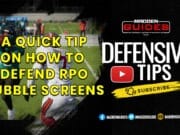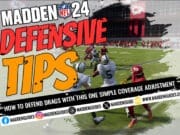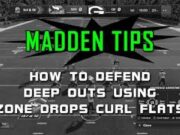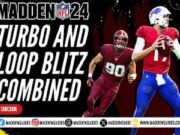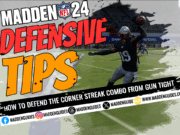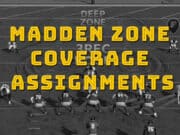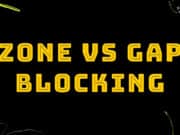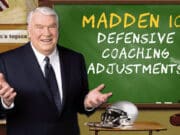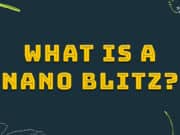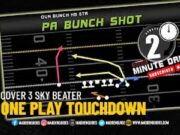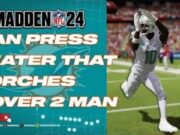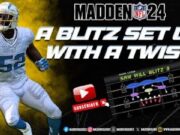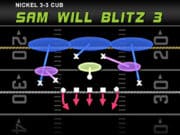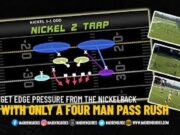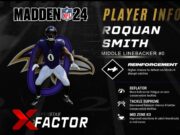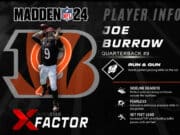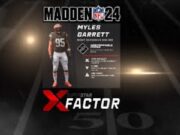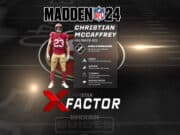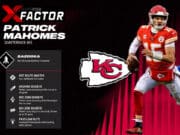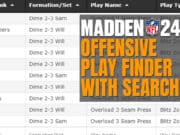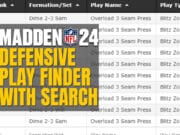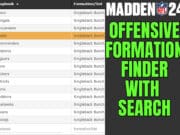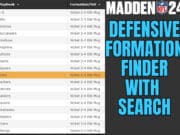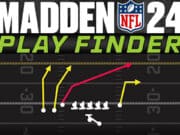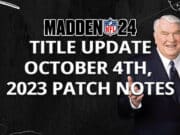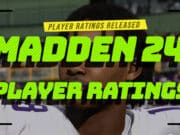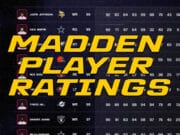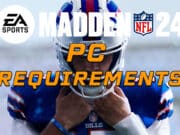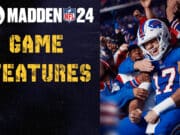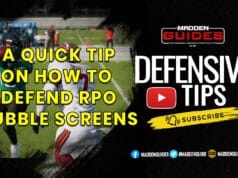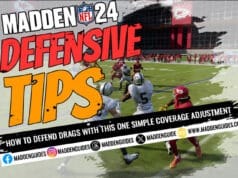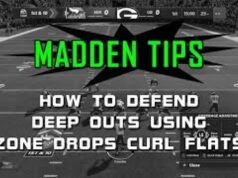There are several blitz concepts and techniques that can be applied in Madden to put pressure on the quarterback. In this Madden Tips breakdown, we take a look at some more common techniques and concepts that players have used.
Stick Skills
Having good stick skills can help when manually blitzing the quarterback. Being able to use your stick skills while coming through a gap can be the difference between getting to the quarterback or not getting to the quarterback. There moves that can trigger different animations that may allow the user-controlled defender to get to the quarterback. If you can trigger those animations, it can make for a long day for the opposing quarterback. Also, be sure you work on shedding blocks while in control of defensive linemen and linebackers. Check the defenders shed block ratings as well as the type of moves that each defender has (power or finesse) to determine which moves to use in dealing with blocks. Shedding blocks have gotten better over the last few years, so you might as well try learning to use them.
Madden Guides Tip: While in control of linebacker, we like to wait to see which blocker is coming after us. Before he goes into his animation we use the power or finesse moves. If our linebacker has a high shed block rating he has a good chance of getting off the block and going straight after the quarterback.
Blitz Concepts
Three main blitz concepts can be used in football video games. They are inside blitz, outside blitz, and overload blitz. In this section, we take a look at all three of three, along with a brief example.
Inside Blitz
Of all the blitz schemes and techniques found in football video games, the inside blitz is most sought after blitz concept. Although there is not as easy to find as in years past, they still can be found. For most players, these types of blitz schemes are known as nanos or enhanced blitzes. They get this name because they generally are the quickest way to bring A and B gap pressure. To set up a good portion of these types of blitz schemes, many require manually moving at least one or more defenders around to certain spots on the field. Over the years, they have been frowned upon by some players because they consider them cheating as they believe they take advantage of the AI. In our opinion, we don't consider them cheating as there are plenty of tools on the offensive ball to counter them.
All inside blitz schemes can be set up with either man or zone coverage behind them. A large percentage of the inside blitz man schemes have either Cover 0 or Cover 1. As far as inside zone blitz schemes go, most of them can be found with some type of Cover 3 behind them
Example of an Inside Blitz
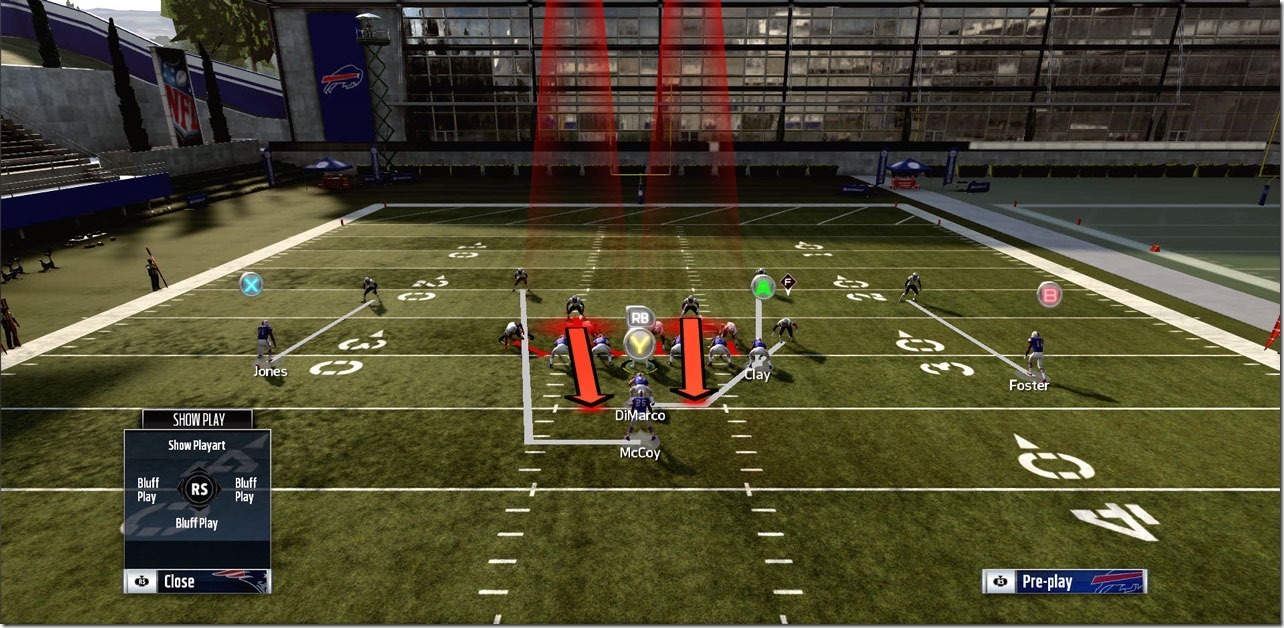 The 4-3 Under – Free Fire is one of the more popular inside man blitz schemes that you will find the games. This Cover 0 defense sends the ROLB and MLB on an inside blitz.
The 4-3 Under – Free Fire is one of the more popular inside man blitz schemes that you will find the games. This Cover 0 defense sends the ROLB and MLB on an inside blitz.
Outside Blitz
Don't get confused between outside blitz and overload blitz because there is a difference between the two. An outside blitz is a common practice among players to prevent their opponent from rolling out their quarterback to either side of the field. To achieve this, they send a defender on a blitz from each side of the field. For example, one side may have a defensive back blitzing, while on the other side, a linebacker blitzing. Just like inside blitz schemes, there is man or zone coverage behind it.
Example of an Outside Blitz
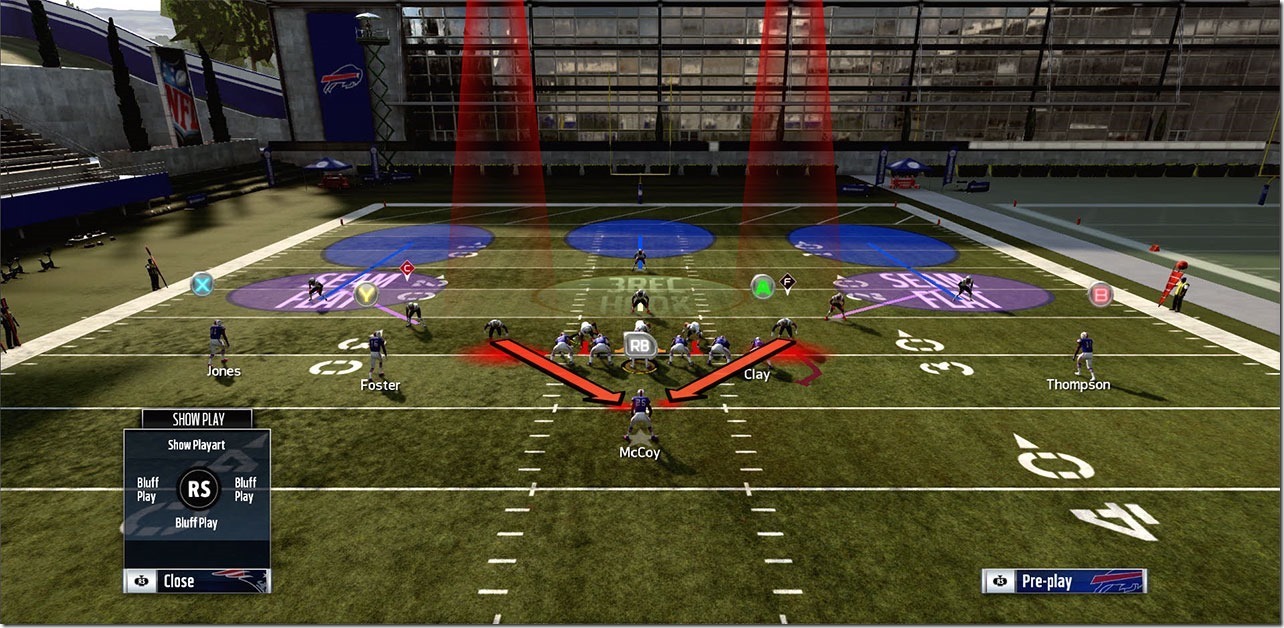 The Nickel 3-3-5 Wide – 3 Sam Will Blitz is an excellent example of what an outside blitz looks like. The ROLB comes on a blitz from the left side of the offensive line, while the LOLB comes on a blitz from the right side. The pass coverage behind the blitz is Cover 3. Three defenders play zone coverage underneath.
The Nickel 3-3-5 Wide – 3 Sam Will Blitz is an excellent example of what an outside blitz looks like. The ROLB comes on a blitz from the left side of the offensive line, while the LOLB comes on a blitz from the right side. The pass coverage behind the blitz is Cover 3. Three defenders play zone coverage underneath.
Overload Blitz
In the current football video games such as Madden and NCAA, overload blitz schemes have replaced inside blitz schemes as far as which ones are used the most. The reason for this is the offensive line looks block inwards first, then looks to block outwards if no threats are coming. For these reasons, more players run overload blitz concepts than inside blitz concepts. Overload blitz concepts can have either man or zone coverage behind them, although many of them have the latter of two.
What players like to do when setting up an overload blitz concept is to overload one side of the offensive line with multiple pass rushers. The idea behind this is to send more defenders in on a blitz than what the offensive line can block. This type of blitz concept often overwhelms the offensive linemen as they can't handle all the pass rusher from the overloaded side. On the other side, there are multiple defenders either playing man or dropping in zone coverage.
Example of an Overload Blitz
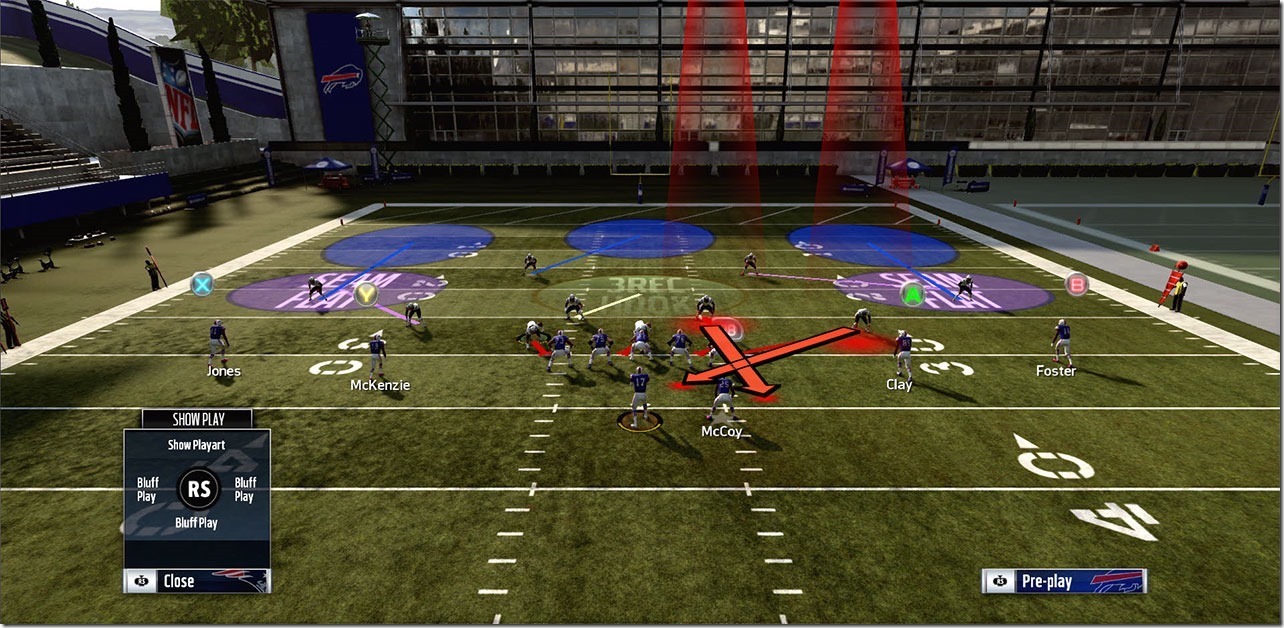 The Big Dime 2-3-6 Eagle Blitz 3 has a defensive back and linebacker blitzing from the right side of the offensive lines. This creates an overload that often allows one of them a clean shot at the quarterback. The coverage behind the blitz is Cover 3.
The Big Dime 2-3-6 Eagle Blitz 3 has a defensive back and linebacker blitzing from the right side of the offensive lines. This creates an overload that often allows one of them a clean shot at the quarterback. The coverage behind the blitz is Cover 3.
Blitz Techniques
Here is look at a few different blitz techniques that can be used to put pressure on the quarterback. In another section of the guide, we show more in-depth examples of how to use these blitz techniques.
Containment Blitz
The containment blitz not only can be used to keep the quarterback from getting out of the pocket but also to hold offensive linemen or create a bigger gap for another defender to blitz through.
Delay Blitz
The delay blitz is not as effective as in years past because the defenders take a few steps up before the snap. With that said, the delayed blitz can be used still in football video games. The best way to use the delayed blitz is to hot route a defender into some of the zone coverage. While in control of the defender, we will wait for the ball to be snapped while holding the strafe button down. After the ball is snapped, we will continue to hold the strafe button for an extra second. We then will rush the quarterback, thus creating a delayed blitz.
Madden Guides Tip: While attempting a delayed blitz, wait for the offensive linemen to engage the other pass rushers. Once they do, manually rush the defender you are in control of. Sometimes you will get blocked and other times you will get a free shot at the quarterback.
Fake Blitz
Much like the delayed blitz, the fake blitz has been toned down somewhat. However, they can still be used and still effective if done correctly. The way we like to fake blitz is to take control of a defender and put him in QB Spy before the snap. We also want to hold down the strafe button. As soon as the ball is snapped, while still in control of the strafe button, we hold the defender still or move him forward a yard or so. This keeps the offensive linemen in front focus on him and not on other defenders that are blitzing. Once we see a defender(s) get passed the line of scrimmage, we manually drop the defender back in pass coverage.
Another way to fake blitz is to manually blitz the defender you are in control of while he is playing zone. Once an offensive lineman tries to block him, release him or manually drop him back into coverage so that he drops back into pass coverage. This often gets an offensive lineman out of position so that cannot block another defender rushing the quarterback.
Madden Guides Tip: There are few zone defenses in the game where defensive linemen will act like they are going to rush the quarterback and then drop back in pass coverage
Key Blitz
Key Blitzing can be done either manually or allowing the CPU defenders to do it on their own. This type of blitz scheme is done when man coverage is called. For example, say you are in control of a defender and he is covering the fullback. After the ball is snapped, you notice the fullback stays in to pass block. You have a few choices here, you can release the defender, you can manually drop the defender back in pass coverage, or you can manually rush the quarterback. This is known as key blitzing. This also works with CPU controlled defenders as well. If the CPU defender looks to see if his man stays in to pass block, then the CPU controlled defender will blitz the quarterback. A good example of this is when 4-3 Normal 2 Man Under is called. If the right outside linebacker is covering the fullback and he stays into the pass block, the CPU controlled right outside linebacker will blitz the quarterback. Keep in mind, this may not always be the case. For example, if the MLB is covering the fullback and the fullback stays in to pass block, the MLB will not rush the quarterback, but instead, play QB Spy.

